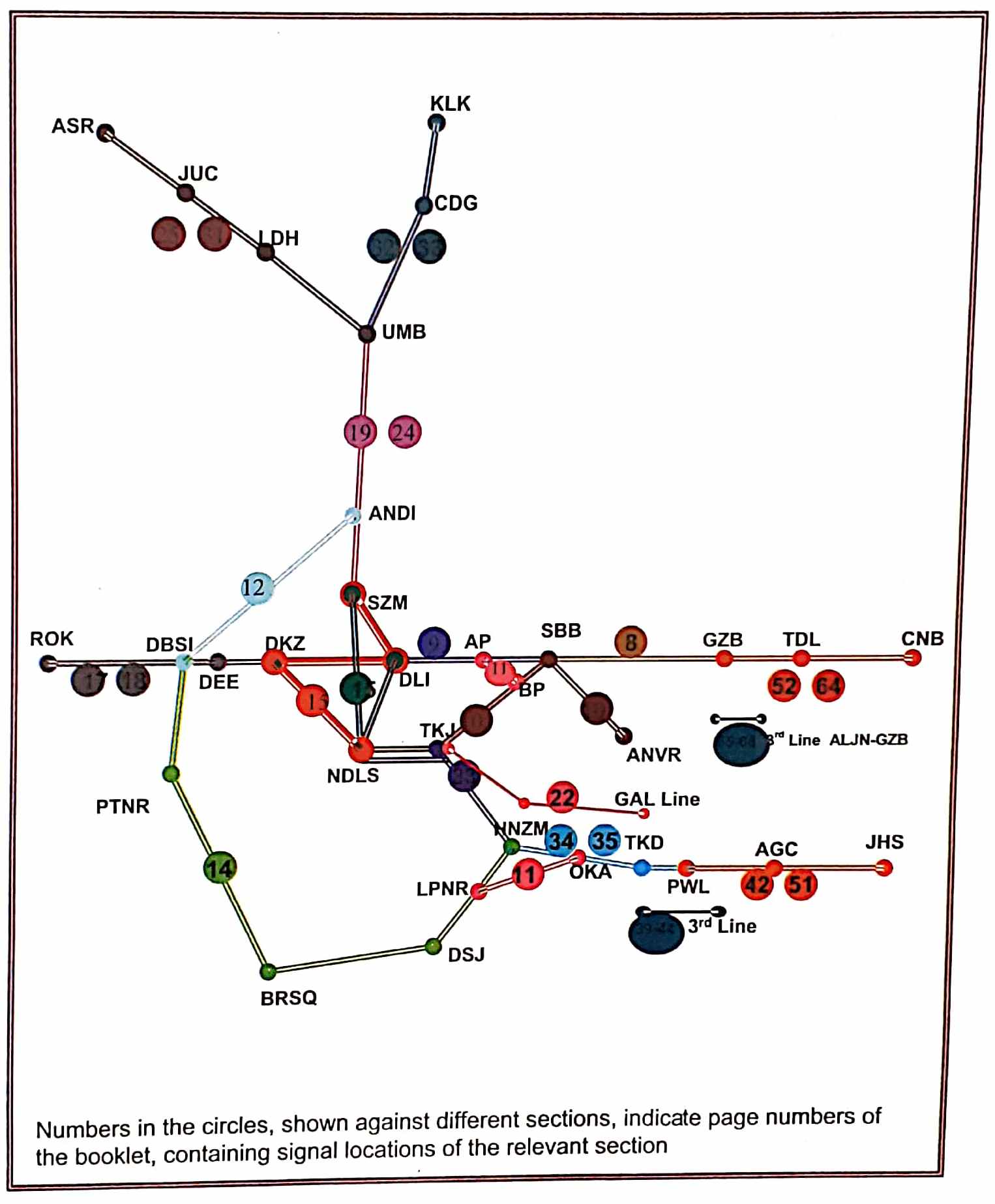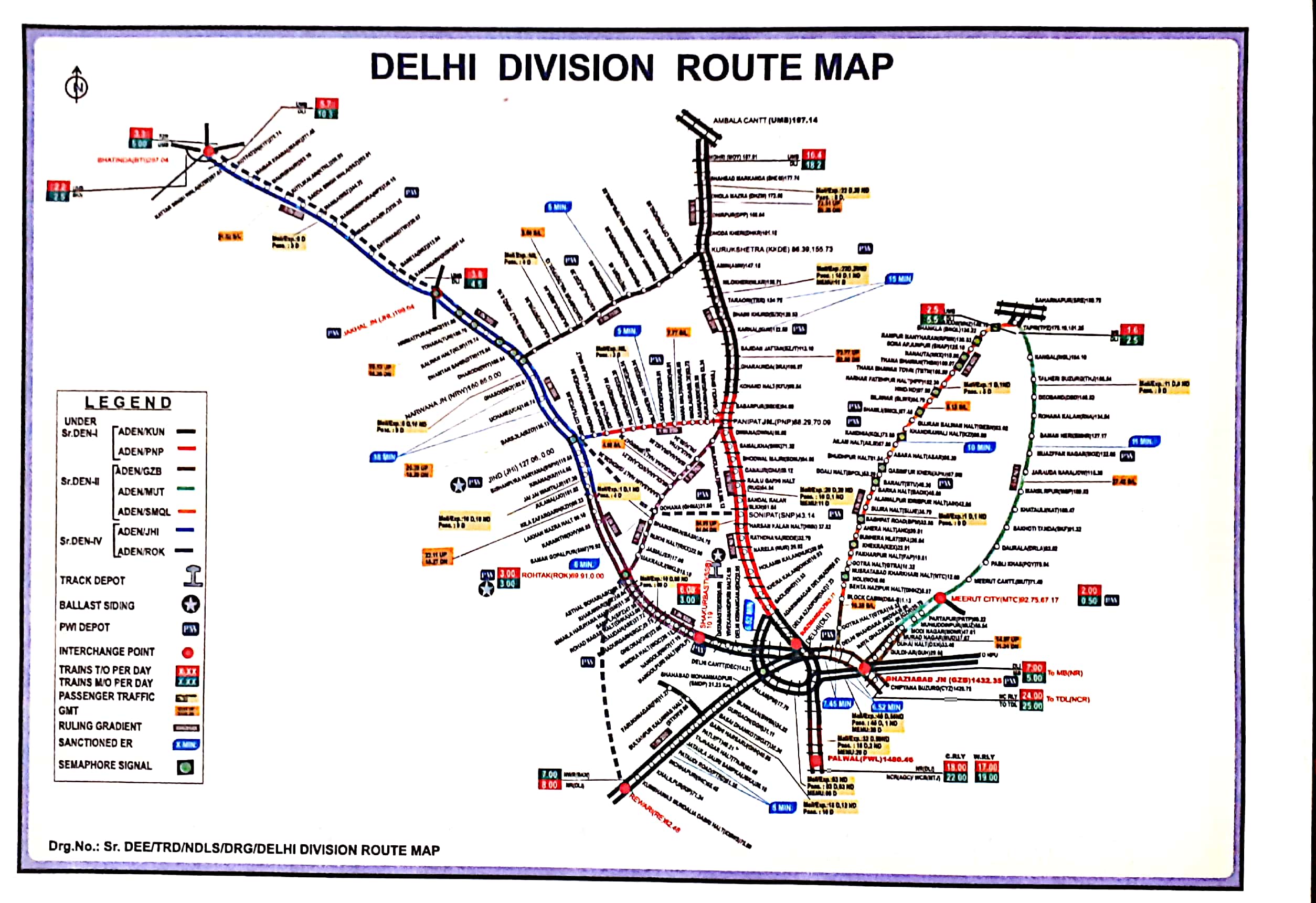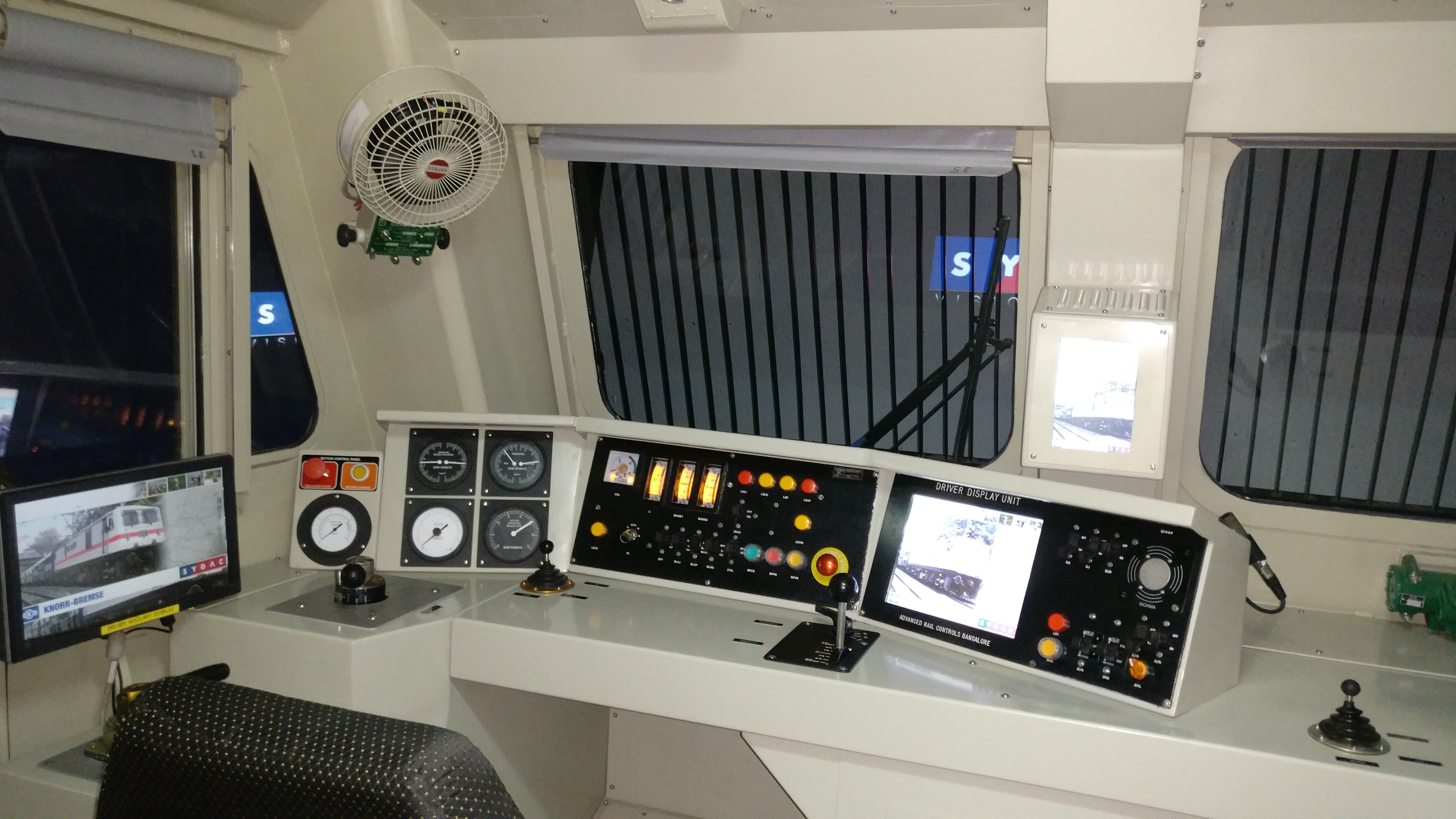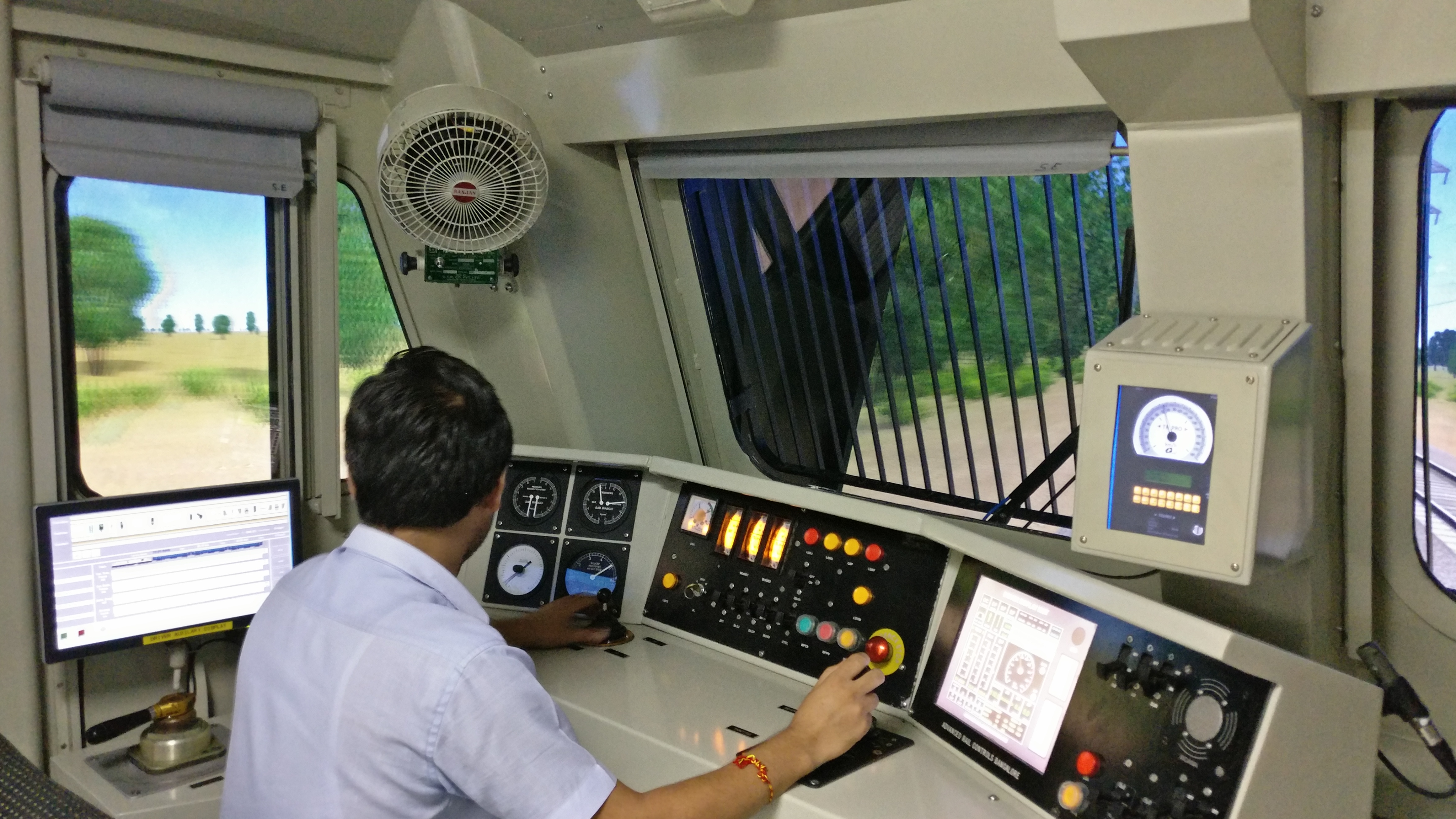
Three phase Electric loco simulator provides trainees with a realistic simulation of the view from the real train driver’s cab. The following parameters are simulated.
Train Dynamics
The simulator models all train dynamics such as Tractive Effort, Braking Effort, Stopping Distance , Rolling Resistance, Aerodynamic Drag, Wheel Slip and the effect of passengers & load on train motion.
Vision
The vision that the trainees sees from within the cab and on the part trainer stations includes –
- Train related features– e.g. Signals and Trackside Structures.
- Man-made structures– e.g. Stations, Platforms and Buildings.
- Surrounding landscape objects– e.g. Trees, Bushes, Hills and Natural Landforms.
- People– e.g. Passengers, Work crews and Children playing near the tracks.
- Environmental effects– e.g. Fog, Haze, Rain, Snow and Sun glare.
- Trainees also see a diagrammatic representation of upcoming track features and depending on the lesson mode, information about upcoming signals and the speed limit.
Motion System
The cab replica is mounted on a 6–DOF (Degrees-of-freedom), MOOG motion based system which provides the loco pilots with simulated train movements with forces due to acceleration and deceleration rounding the curves and driving over points and rough tracks. Two of the part trainer stations are mounted on CKAS motion based systems. These motion based systems are 1–DOF (Degree of Freedom) and simulate the forces applied to the loco pilot during acceleration and deceleration.
Sound
The simulator generates sounds as heard from the loco pilot’s perspective. The following sounds are simulated –
- Train noises – e.g. engines, air brakes and wheel squeal on curves.
- Environmental noises – e.g. the effect of passing through cuttings and bridges.
- The sound of other trains passing on adjuncts tracks.
Events
An event is a condition that is present in a given scenario, such as the presence of rain or triggering of a fault condition. There are various event groupings which include the following –
- Environmental events– e.g. Rain, Fog, Haze and Snow.
- Status of various track-side features that is capable of having multiple states, such as signals.
- Train related events that directly affect the running of the train, such as the amount of track adhesion.
- Events can be configured so as to be present from the starting of simulation to be triggered when certain conditions are met.
-
Conditions for triggering the presence of any event can include –
- Simulator time reaching a pre defined value
- The train reaching a given station.
- The activation of other events (for example – brake failures could be set to occur for the first time when the train speed exceeds 85 Kmph.
Instructor Interaction
The instructor can interact with the trainees in various ways via the instructor station and part trainer instructor station. The instructor can –
- Speak to trainees directly, either to simulate the presence of a controller or guard or to give instructions directly.
- Cause additional events and faults to appear on the train via the SCC.
- Disable the motion system in the case of emergency.
Route Mapped 1

Route Mapped 2




